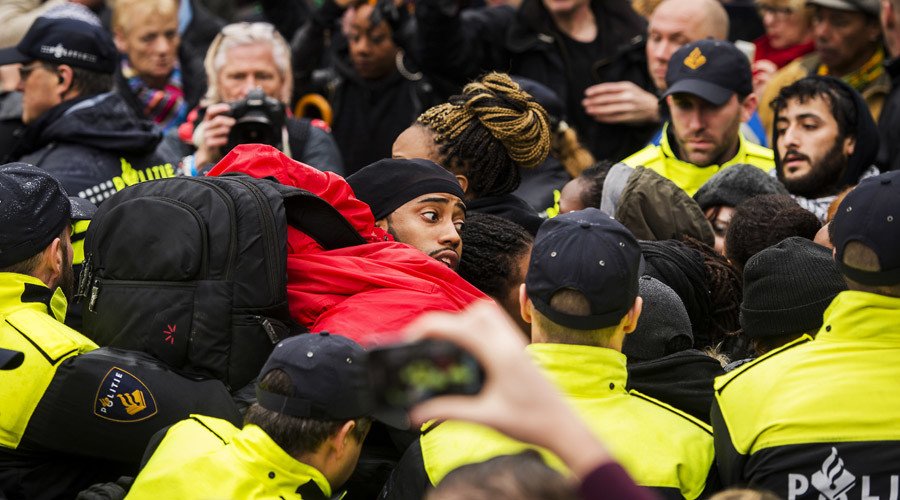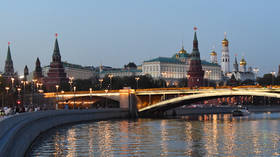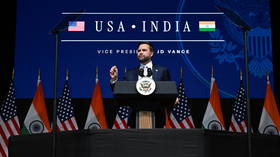‘Reminder of slavery’: UN wants to scrub Holland’s Black Pete holiday character
A new United Nations report has called on the Netherlands to eliminate or alter the centuries-long tradition of celebrating the winter festive season with a controversial character known as Black Pete, a dark-skinned assistant to St. Nicholas.
Zwarte Piet helps the Dutch version of Santa Claus distribute presents in the month before Christmas and is played as a silly, mischievous and indolent character, usually animated by an actor in blackface. In recent years, he has become a lightning rod for a cultural debate, and has even provoked mass violence.
Here is the @UNrightswire (#CERD) verdict on the #racism & discriminatory effect of #BlackPete
http://t.co/3xZo5TSqqWpic.twitter.com/cux6IcQ4iO
— Werner De Poorter (@EthnicZebras) August 28, 2015“Black Pete is sometimes portrayed in a manner that reflects negative stereotypes of people of African descent and is experienced by many people of African descent as a vestige of slavery, which is injurious to the dignity and self-esteem of children and adults of African descent,” said a preliminary document published by the UN Committee on the Elimination of Racial Discrimination. “Even a deeply-rooted cultural tradition does not justify discriminatory practices and stereotypes.”
As the Netherlands is a signatory to the international organization’s charter to eliminate all racial discrimination, it must undergo a review every four years, when such a report is compiled by the UN and human rights organizations.
This year’s edition recommends that Dutch authorities “actively promote the elimination of those features of the character of Black Pete which reflect negative stereotypes” and “find a reasonable balance, such as a different portrayal of Black Pete and ensure respect of human dignity and human rights.”
READ MORE: Belgian FM accused of racism after painting face black at charity event
Despite the ongoing immigration crisis, discussion of the festive character dominated meetings with a specially-appointed UN panel in Geneva, Switzerland last week, with officials tentatively promising to alter the character to bring him more in step with the times.
But following the release of the report, Dutch Prime Minister Mark Rutte, who presents himself as a liberal, washed his hands of the contentious issue.
“What Christmas songs you should sing, how you celebrate Christmas and Easter – this isn’t what politics is about,” he told reporters during a news conference at the Hague.
“Black Pete is not a state issue. I think the report is part of the discussions that have been going on for some time now about this tradition. But beware a government that decides what a tradition should look like.”
Last November, over 90 people were arrested after demonstrators disrupted a traditional pre-Christmas procession in Gouda with “Black Pete is racism” placards, provoking scuffles with revelers.

The UN condemned the authorities’ handling of this and other such episodes.
“Citizens seeking to peacefully protest against such portrayals have been denied authorization to conduct such protests at a meaningful time and place and have been subjected to violent attacks and other forms of intimidation, which have not been adequately investigated,” claimed the report.
READ MORE: 90 arrested amid protest over ‘racist’ Dutch ‘Black Pete’ festival
One facet of the increasingly fussy debate has focused on the exact history of Zwarte Piet. His supporters say he dates back to Germanic legends, or medieval portrayals of a captured demon, and that his face is black from having to help St. Nicholas push presents through the chimney.
His critics say that he is a crude caricature that first appeared as black in the 19th century, who displayed the characteristics of immaturity and laziness that were often associated with slaves.
“I trace him back to pre-Christian times, whereas the people who want him abolished claim he is a nineteenth-century slave. Probably because Black Pete’s adversaries largely originate from nineteenth-century slaves. I think a debate on our slavery past is legitimate, but not at the expense of Black Pete,” Marcel Bas, who has campaigned to defend Black Pete, told RT.
“The opponents are, really, a group within an urban group of people; not many. Intellectuals and immigrants are among the greatest opponents. The rest of the people – the ‘man in the street’ – are against this critique, but they don’t know what to do against it.”
Black Pete-Zwarte Piet and sore losers. pic.twitter.com/RU35DELENh
— Jax (@JAX_226) June 23, 2015Indeed, the to-and-fro over the exact portrayal of Black Pete skims over an undercurrent of cultural anxiety about national identity, immigration, and freedom of expression.
If the Dutch don’t understand Black Pete is the tip of a racist iceberg that proves it is the tip of a racist iceberg pic.twitter.com/Rz6E8DeanJ
— Peter van der Werff (@WerffPeter) August 28, 2015Only four countries in Europe accepted more asylum seekers than the Netherlands last year, and even more will be taken in this year, in what is already one of Europe’s most densely-populated countries. The Dutch have a proud tradition of tolerance, but also of iconoclasm. Historically, they resent being denied freedom of expression, hence the controversial ascent of politicians such as Geert Wilders, who speak out against political correctness and the erosion of Dutch values.
In a bid to defuse last year’s tensions, several groups introduced alternative face paint colors to create a more inclusive Black Pete. The children’s Nickelodeon network has said that it will keep the character this year, but not use any face paint at all.













